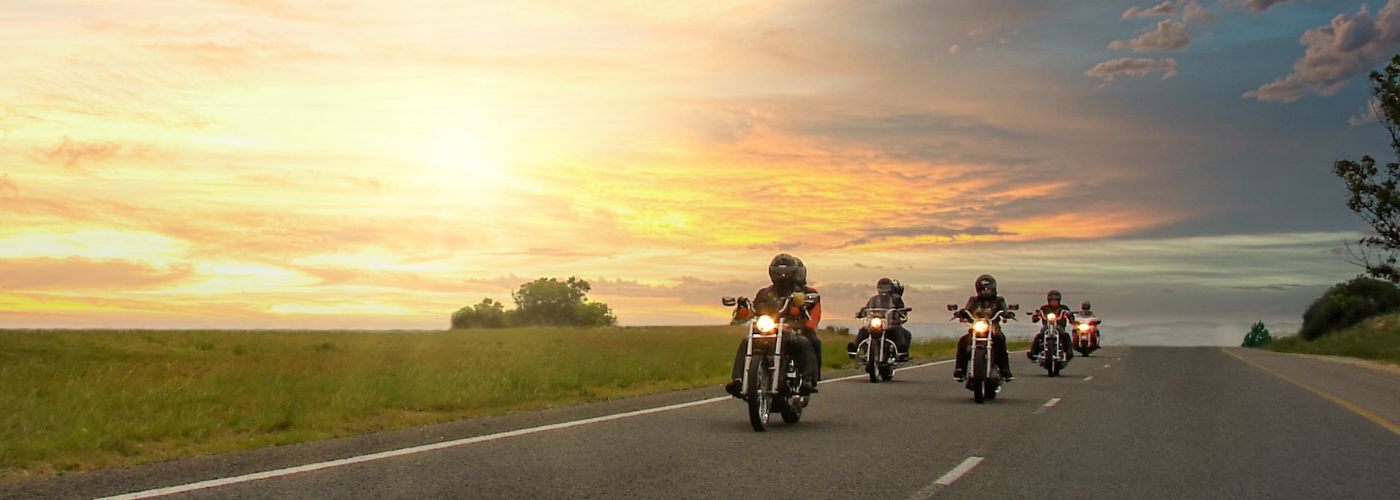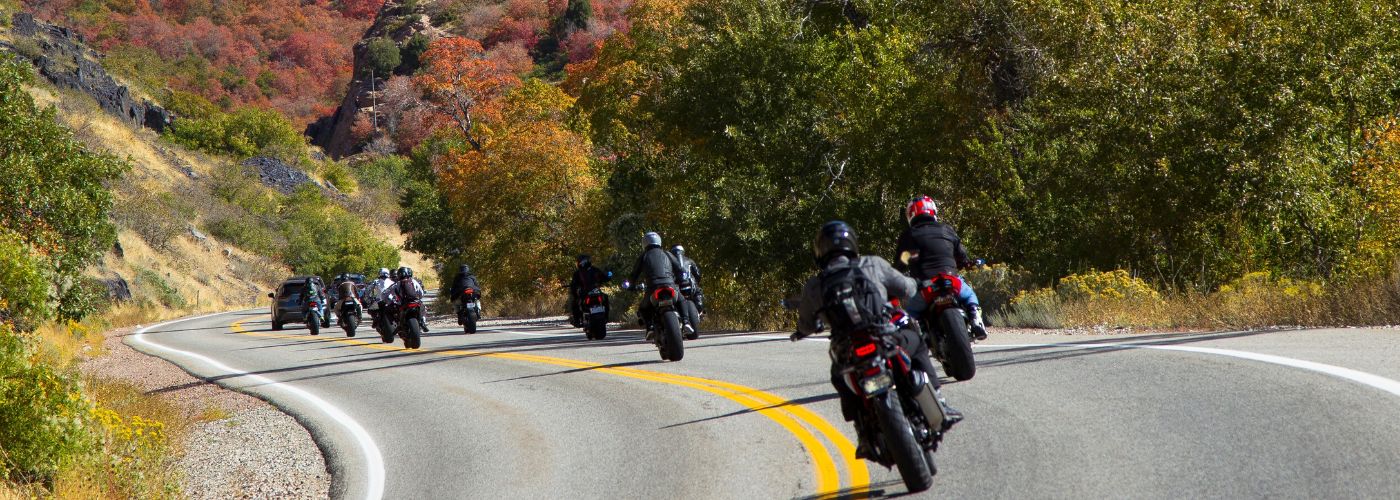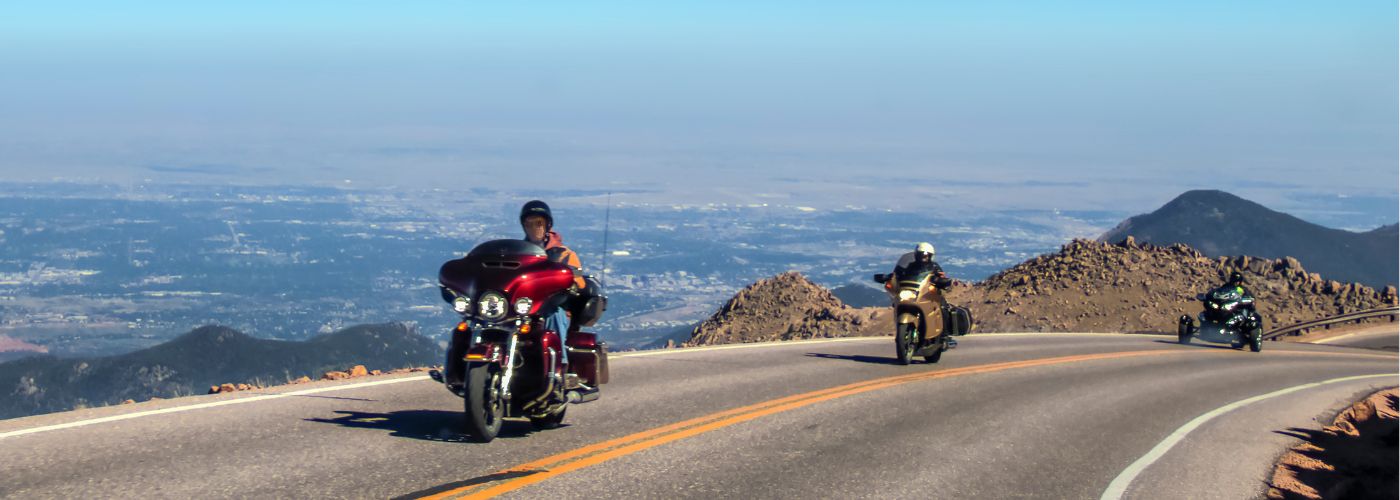Riding a motorcycle in a group can feel like being part of a tight-knit family, but it also demands a keen awareness of safety. Statistics show that group rides can lead to more potential hazards if riders are not prepared. In this article, we’ll share vital safety tips for motorcycle riding in groups. You’ll walk away with practical advice to make your next ride both fun and secure!
Tips For Motorcycle Riding in Groups
Riding in groups can be exhilarating, but it requires a different mindset than solo rides. Before hitting the road, make sure to check your bike thoroughly. This is one of the most overlooked tips for motorcycle riding in groups.
Checking your bike includes tire pressure, fluid levels, and brakes. A well-maintained motorcycle not only ensures your safety but also contributes to the smooth flow of the group. Remember, when one bike has issues, it can disrupt the entire ride.
Be sure to look at the weather conditions as well. Riding in a group means you are more exposed to the elements, and sudden changes in weather can affect everyone’s safety. If rain is expected, consider adjusting your plans or preparing for wet conditions by ensuring all riders have appropriate gear.
Establish a Pre-Ride Meeting Agenda
Establishing a pre-ride meeting agenda is crucial when hitting the road with fellow riders. This is one of the most important tips for motorcycle riding in groups.
This gathering sets the tone for the ride, allowing everyone to discuss routes, hand signals, and any stops along the way.
Make sure to cover important topics like group size and formation, as these can greatly affect safety and enjoyment. Encourage each rider to voice their preferences and concerns, creating an open environment that fosters camaraderie.
Another key tip is to maintain consistent spacing between motorcycles. This not only enhances safety but also allows for better maneuverability in case of sudden stops or obstacles. Riders should practice the “two-second rule” to ensure adequate distance, giving everyone enough time to react.
Choose the Right Leader and Tail Gunner
Choosing the right leader and tailgunner is crucial for a smooth group ride. The leader sets the pace, navigating the route while ensuring everyone stays together. This person should be experienced and confident, able to handle unexpected situations.
Meanwhile, the tailgunner acts as the eyes at the back, watching for any stragglers or issues that may arise. Their job is to ensure no one gets left behind, creating a sense of security within the group.
Effective communication between the leader and tailgunner is essential for maintaining group cohesion. They must establish a system of signals or cues to alert each other to changes in pace, hazards on the road, or any necessary stops.
Additionally, both should be familiar with the route and aware of potential challenges, such as steep hills or busy intersections.
Riders should also be briefed on the group’s expectations before hitting the road. This includes understanding hand signals for turns and stops, maintaining a safe distance from one another, and being mindful of their surroundings.
It’s important for all participants to ride predictably and courteously, fostering a sense of camaraderie and safety.
Form a Proper Riding Formation
When riding in groups, forming a proper riding formation is crucial for safety and smooth navigation. Consider using a staggered formation, where bikes are slightly offset from each other.
This arrangement not only enhances visibility but also allows for better reaction times in case of sudden stops or obstacles. Each rider should maintain a safe following distance to avoid collisions and give themselves room to maneuver if needed.
Another great formation is the single-file line, especially when navigating narrow roads or areas with heavy traffic. In this formation, riders line up behind each other, allowing for a smaller profile and reducing the risk of collisions with vehicles.
Riders should still maintain adequate spacing to ensure that they can react quickly to any changes in speed or direction. Harleys are typically popular motorcycles for road trips that many love.
Understand the Importance of Group Signals
Riding in a group can be exhilarating, but it also demands clear communication. Understand the importance of group signals; these are crucial for maintaining safety and cohesion. Hand signals or brake lights should be used consistently to inform others of your intentions.
For example, a simple left hand extended means you’re turning left, while tapping your helmet indicates a hazard ahead. Practicing these signals before hitting the road helps everyone stay on the same page.
Another important the right turn signal, which is typically indicated by extending your right arm straight out to the side. This is particularly important in situations where the left hand might not be visible to riders behind you, such as when you’re in a staggered formation.
Additionally, if you need to slow down or stop suddenly, it’s crucial to use a signal that everyone can see. A common practice is to extend your left arm downward with your palm facing back, which indicates to those behind you that they should prepare to slow down.
Have An Emergency Plan Set
Riding in a group can be exhilarating, but it also requires a different level of focus and coordination. One crucial tip is to have an emergency plan set before hitting the road. Make sure everyone in the group knows what to do in case of an unexpected situation, whether it’s a breakdown or an accident.
Designate a point person to handle emergencies and ensure all riders have access to each other’s contact information. This preparedness not only boosts confidence but also enhances safety.




Safety Tips For Motorcycle Riding in Groups
Riding a motorcycle in a group can feel like being part of a tight-knit family, but it also demands a keen awareness of safety.
Apr
How To Be More Visible During Night Riding
Have you ever felt uneasy riding your bike at night? You’re not alone! Many cyclists worry about being seen in low-light conditions. This article
Mar
Best Types of Powersports Vehicles For Off-Roading
Imagine tearing through a forest trail or conquering a sandy dune—off-roading is where adventure meets freedom. As powersports continue to evolve, choosing the right
Feb